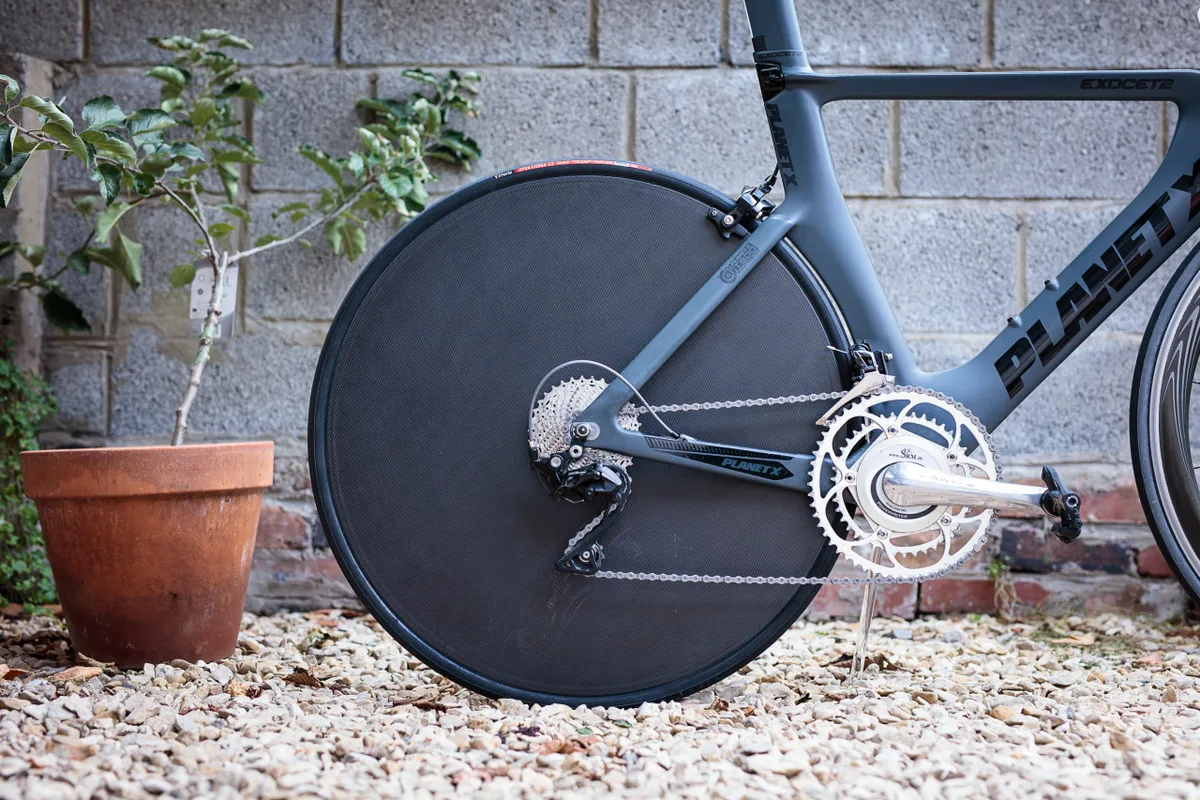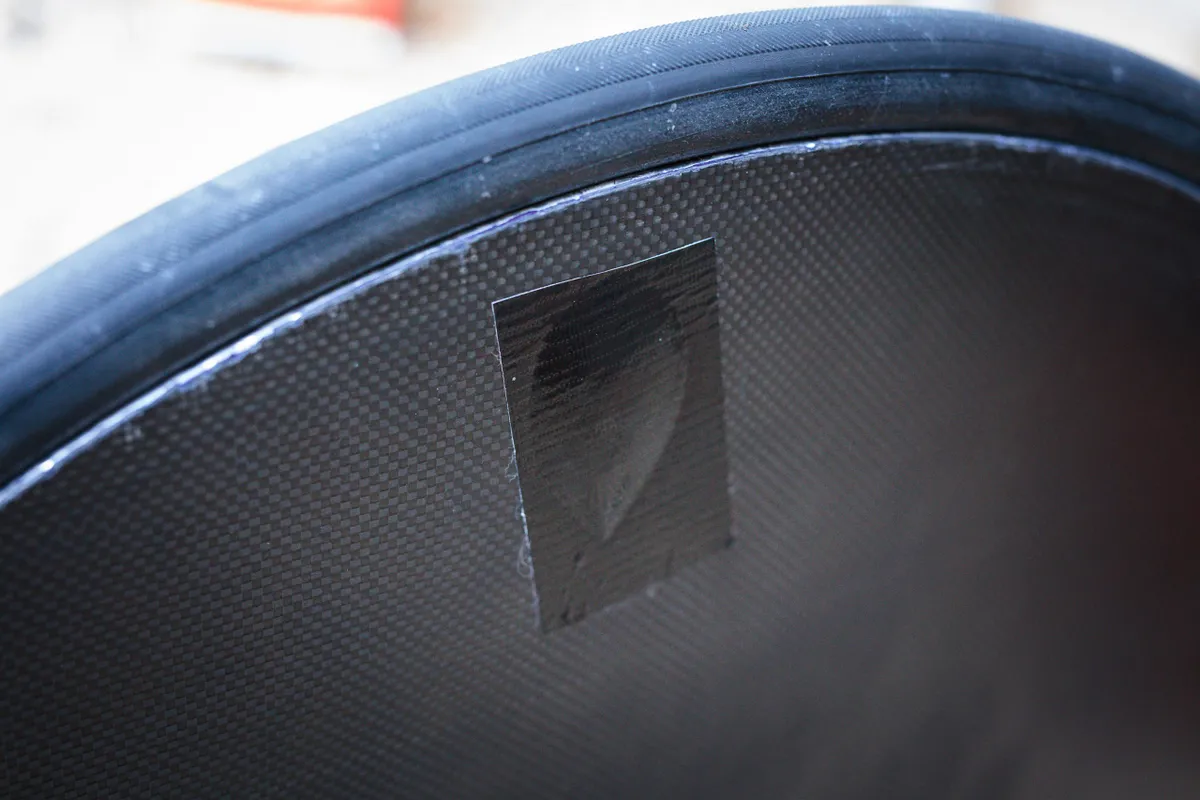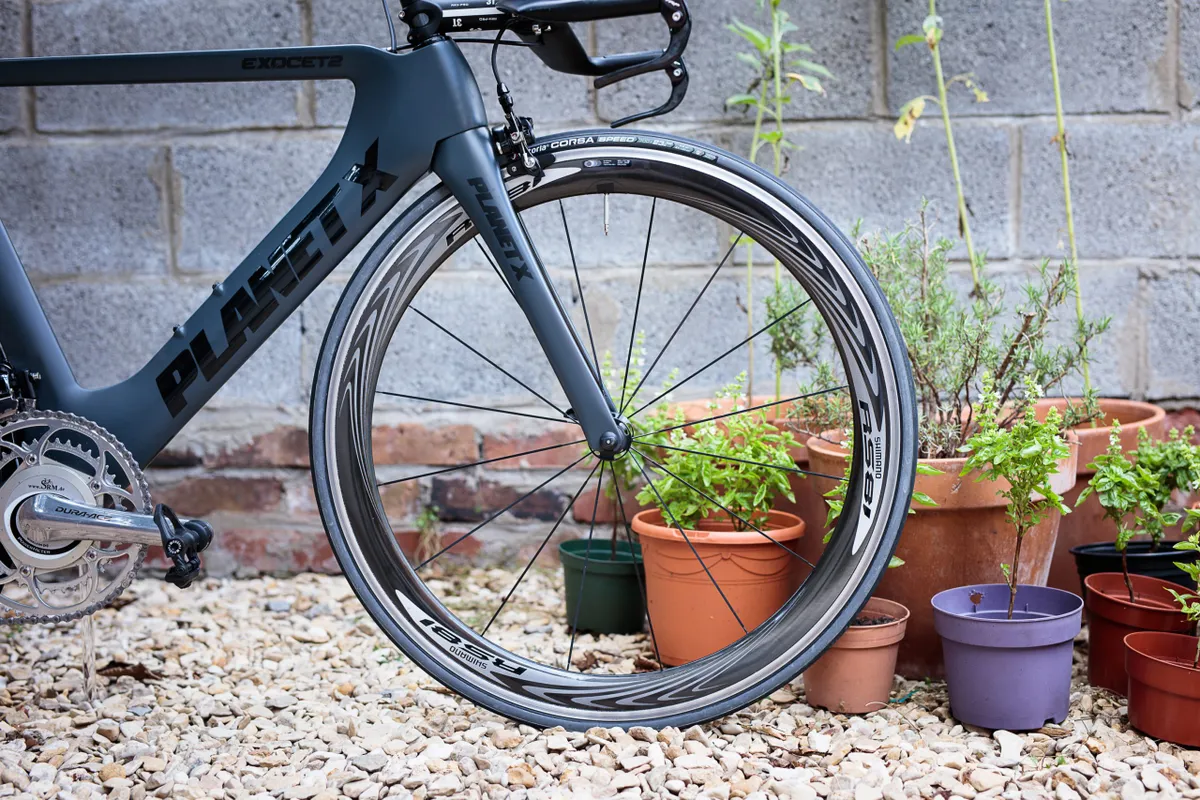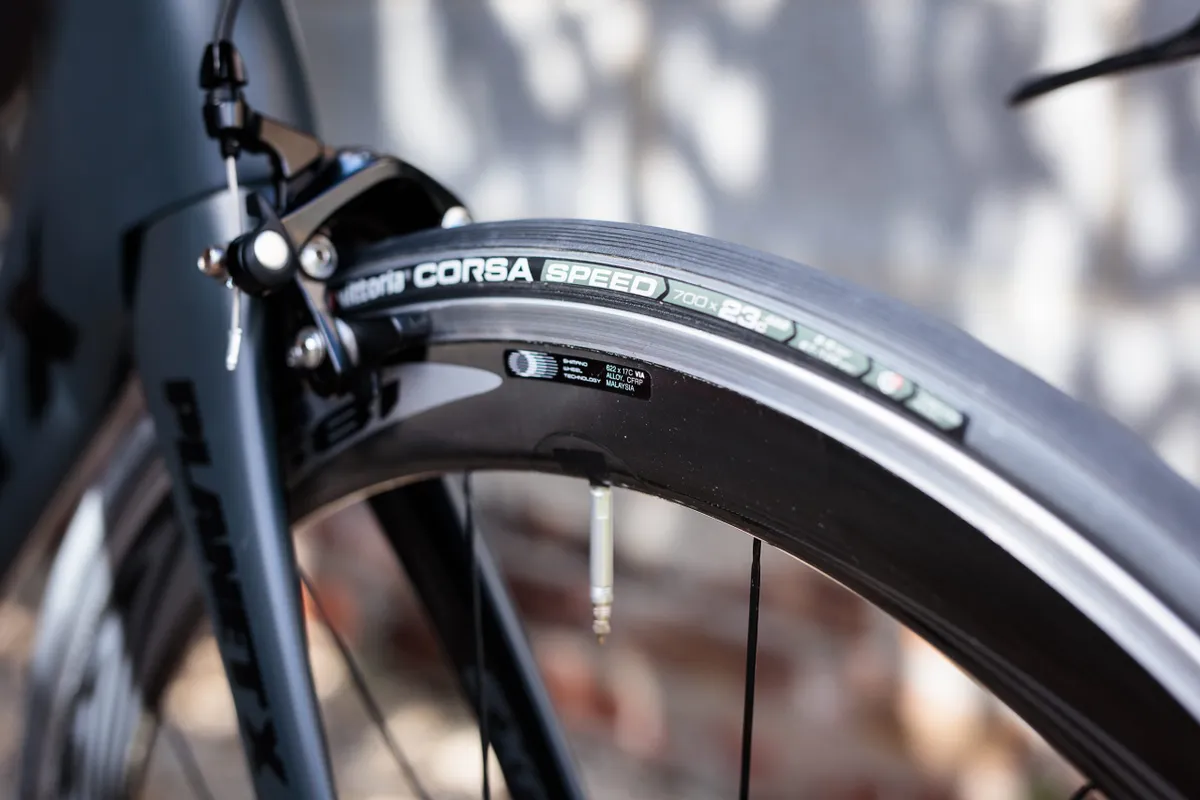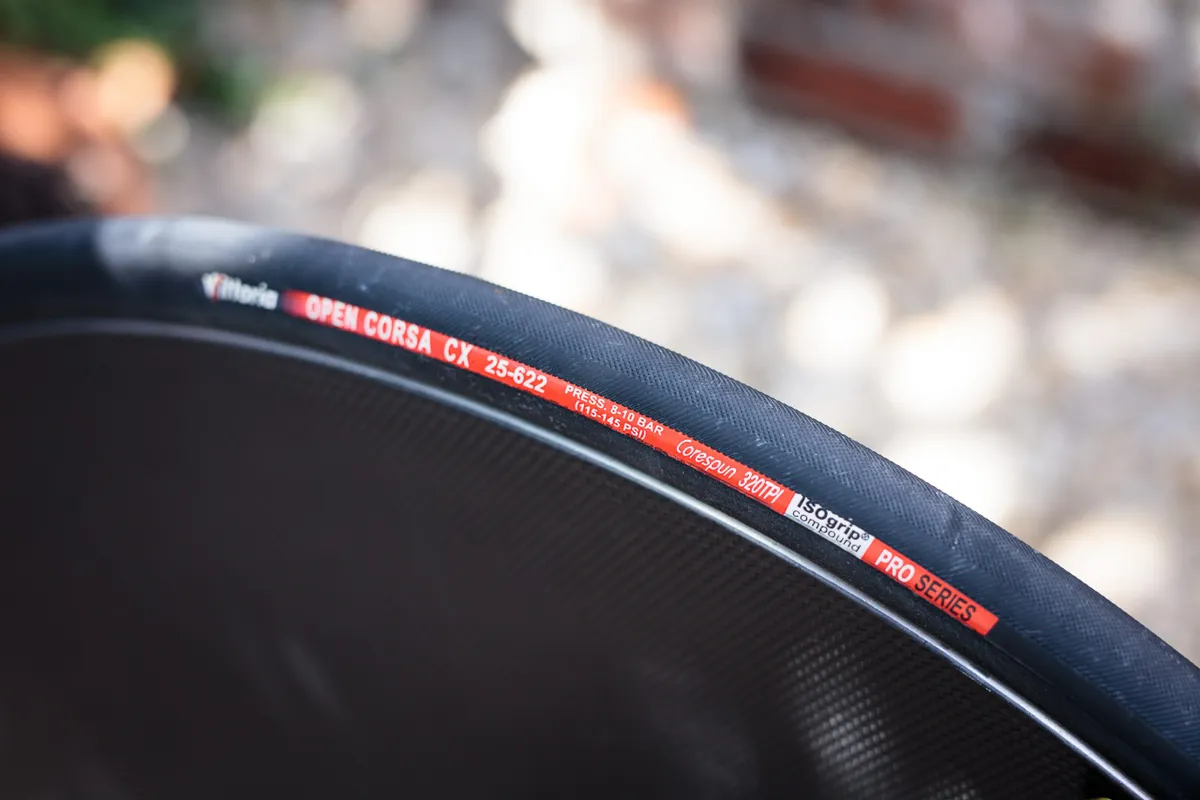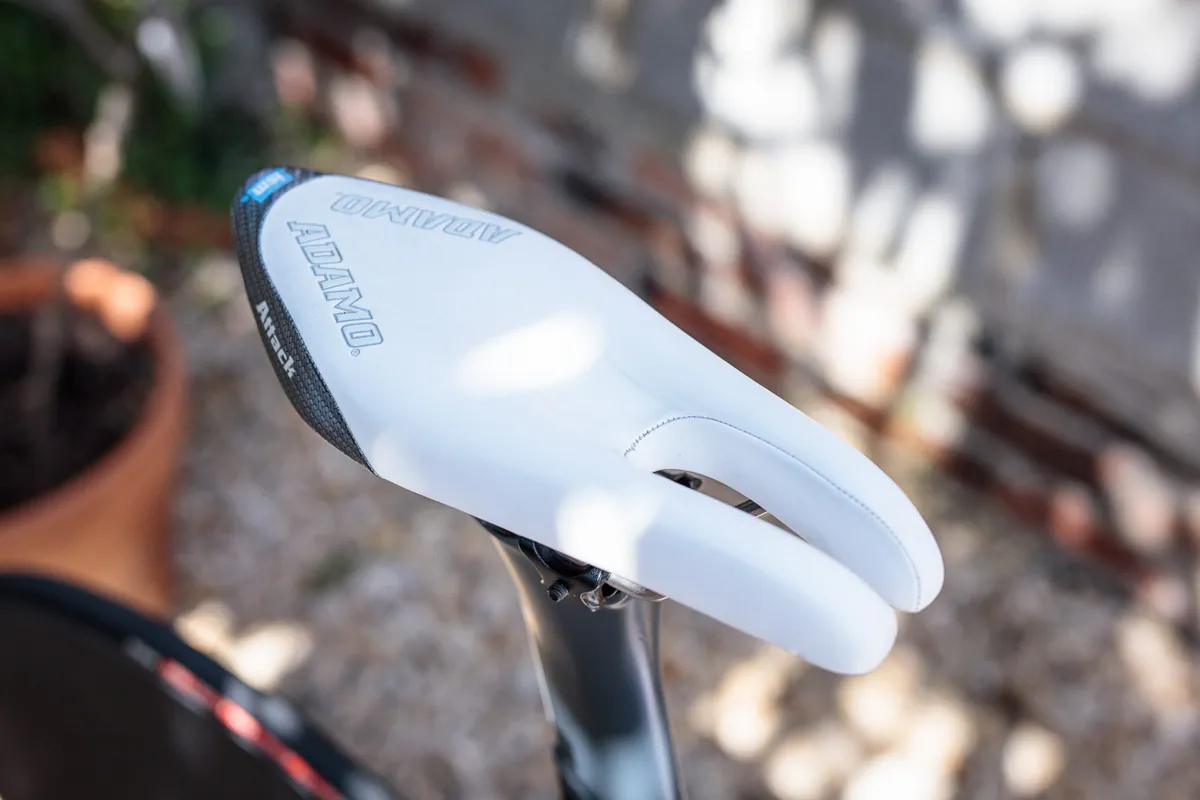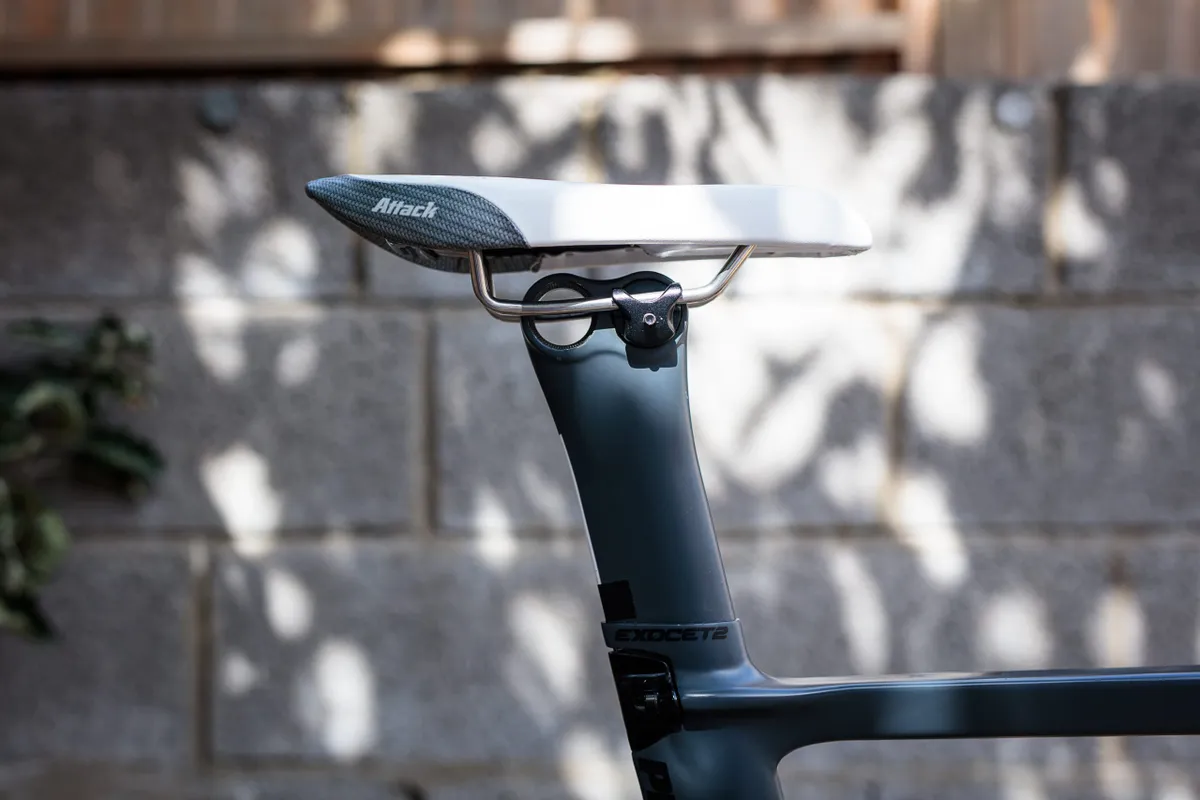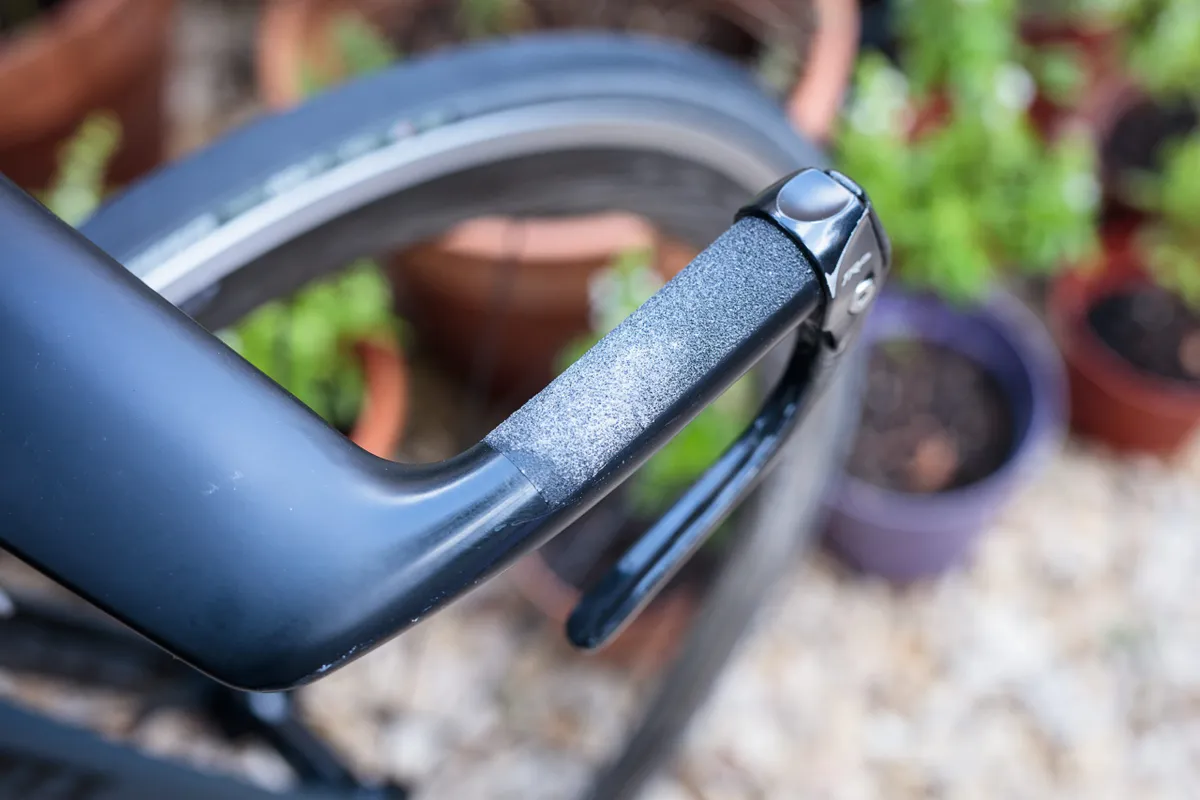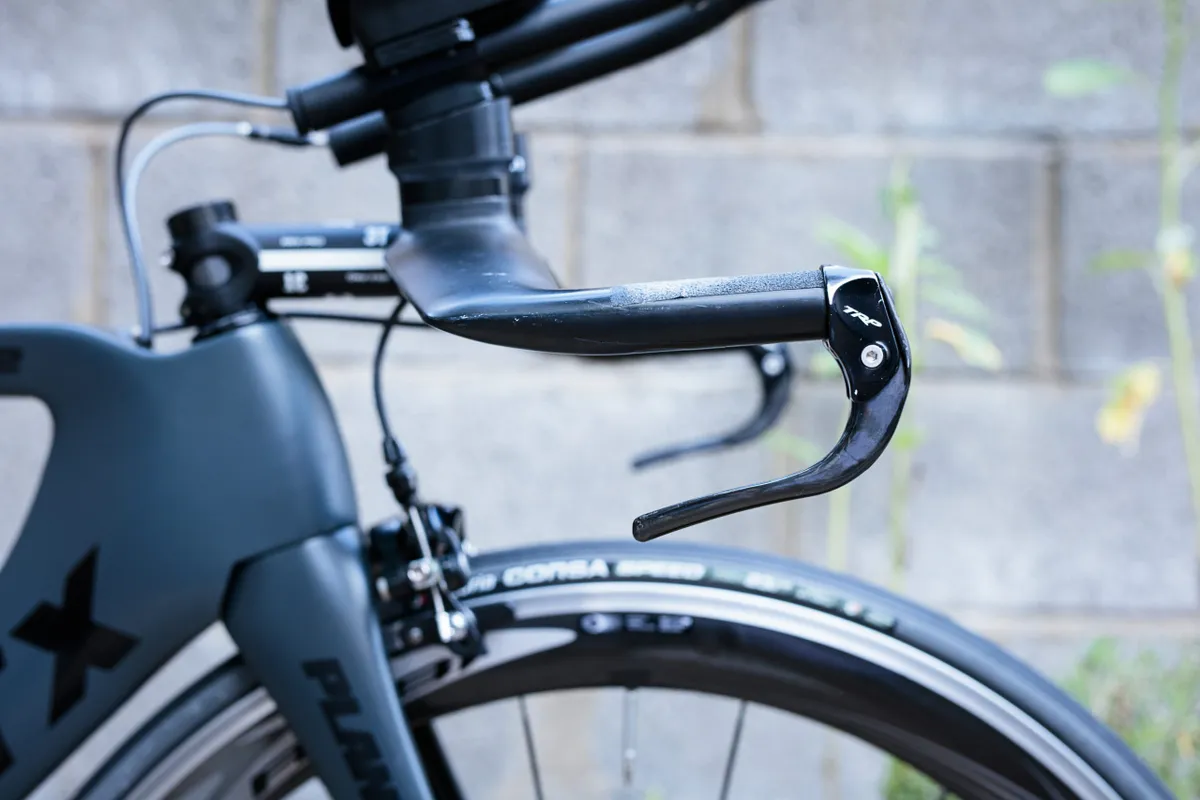BikeRadar Builds is back, and this time I have the great pleasure of bringing you my time trial bike, a custom built Planet X Exocet 2.
The story behind this build is that I wanted the fastest possible bike without spending loads of money.
Consequently, I’ve put all of my limited spending power into aero, rolling resistance and efficiency gains. Unless you’re doing hill climbs, weight basically doesn’t matter for time trials, so I just ignore it.
For the purposes of this article, and to make a point, I weighed it for the very first time. As pictured, plus a Garmin 810 and a Cateye rear light (a rear light is now a requirement in UK time trials), it weighs 9.64kg. That makes it the heaviest bike I own, but also, undoubtedly, the fastest.
To anyone who’s ever ridden a time trial bike, that shouldn’t come as a surprise, but the aero versus weight debate refuses to die.
If you have other priorities, such as valuing low weight over aerodynamic efficiency because of how it makes a bike look, feel or ride – a totally reasonable position to take – then that's fine. I'm not here to tell you how you should enjoy riding your bike.
But, if you want to ride bikes as fast as possible (and unless you only ride up very steep hills), you should worry about aerodynamics and rolling rolling resistance, not about weight.
Welcome to BikeRadar Builds
BikeRadar Builds is our occasional look at the team’s personal bikes, including custom rigs, commuters, dream builds, component testbeds and more.
This is our chance to geek out about the bikes we’re riding day-to-day, and explore the thinking (or lack of it!) behind our equipment choices.
A little bit of history
I first built this bike up in 2015, having initially done a few time trials on a modified road bike in 2014.
I'd been racing road and crits for a few years and fancied giving time trials a go because it was something my grandad did a lot of in his youth.
My lithe build and small engine suggested I wasn’t built for flat time-trials, so I didn’t exactly set the TT world alight, but I did okay on the occasional good day.
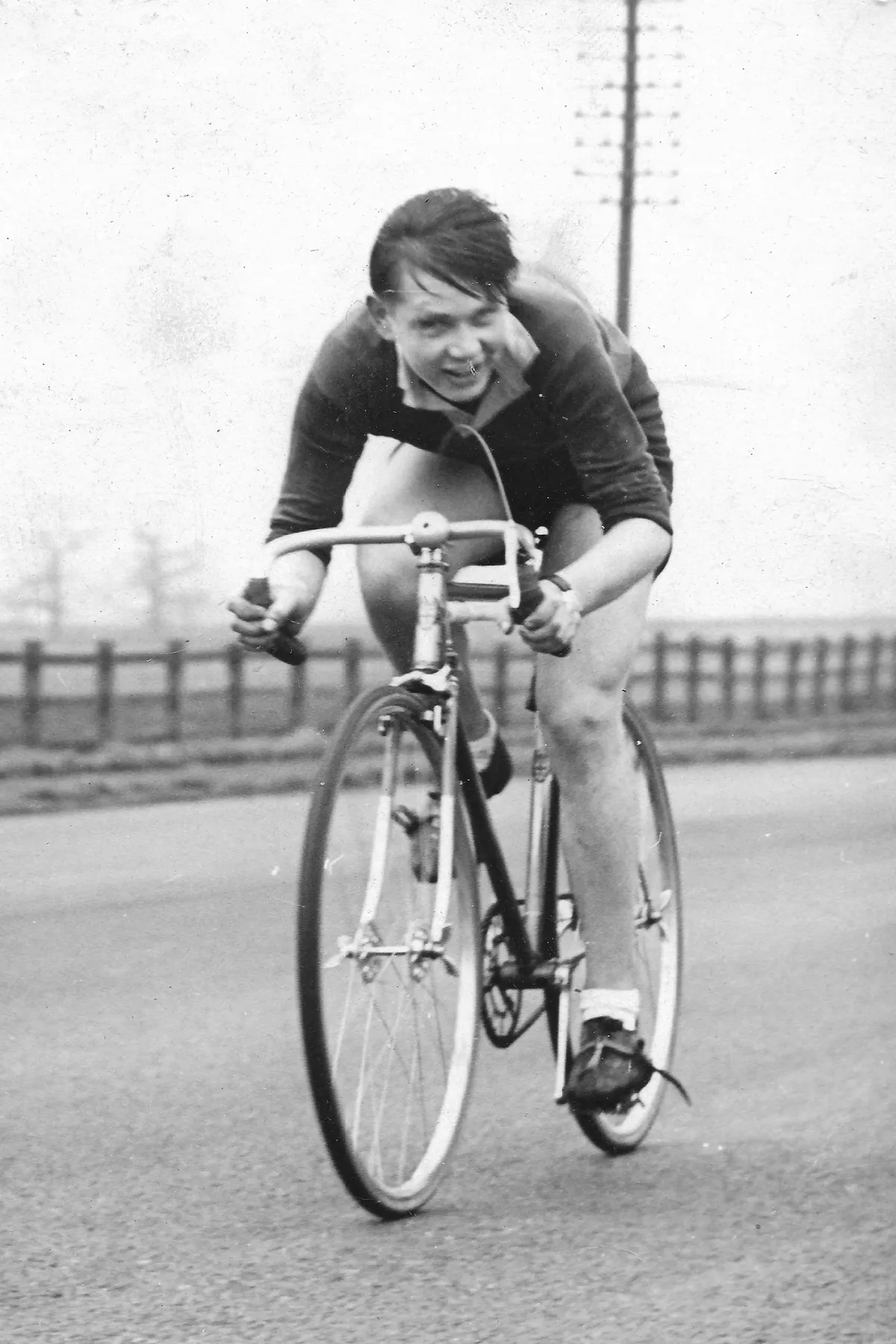
Unfortunately, whether through overtraining or just bad luck, I came down with viral encephalitis (inflammation of the brain caused by, in my case, the varicella zoster virus) in August of that year, and my amateur racing career sadly came to an abrupt halt.
I kept the bike though, because I hoped I’d eventually build up enough fitness to race it again without embarrassing myself.
A few years of on/off training passed, but eventually I came into winter 2019 thinking I might give the 2020 time trial season a crack. Unfortunately, a global pandemic got in the way.
With the worst of that now hopefully behind us here in the UK, and with the green shoots of fitness starting to appear, I’ve made an inconspicuous return to racing with this bike at the mid-week time trials around Chew Lake, run by Bristol South Cycling Club.
Planet X Exocet 2 frameset
Not only did I get this frame from Planet X, a Sheffield based bike brand renowned for making cheap bikes, but I also got it on sale. I’ve lost the receipt, but I think I paid around £500 for it.
It’s by no means the most technologically advanced time-trial frameset in the world, but £500 is not bad for a full carbon frameset with internal cable routing.
As BikeRadar reported when it was initially announced in 2011, the frameset's aerodynamic profile was apparently developed in conjunction with the University of Sheffield, using computational fluid dynamics (CFD).
The end result is a frameset on which practically all of the major tubes are narrow airfoil shapes. While I don’t know for sure, I suspect this makes it fast in a low yaw situation, but perhaps less so when there’s a crosswind or you’re riding at slower speeds (the effective yaw angles you experience decrease as you ride faster).
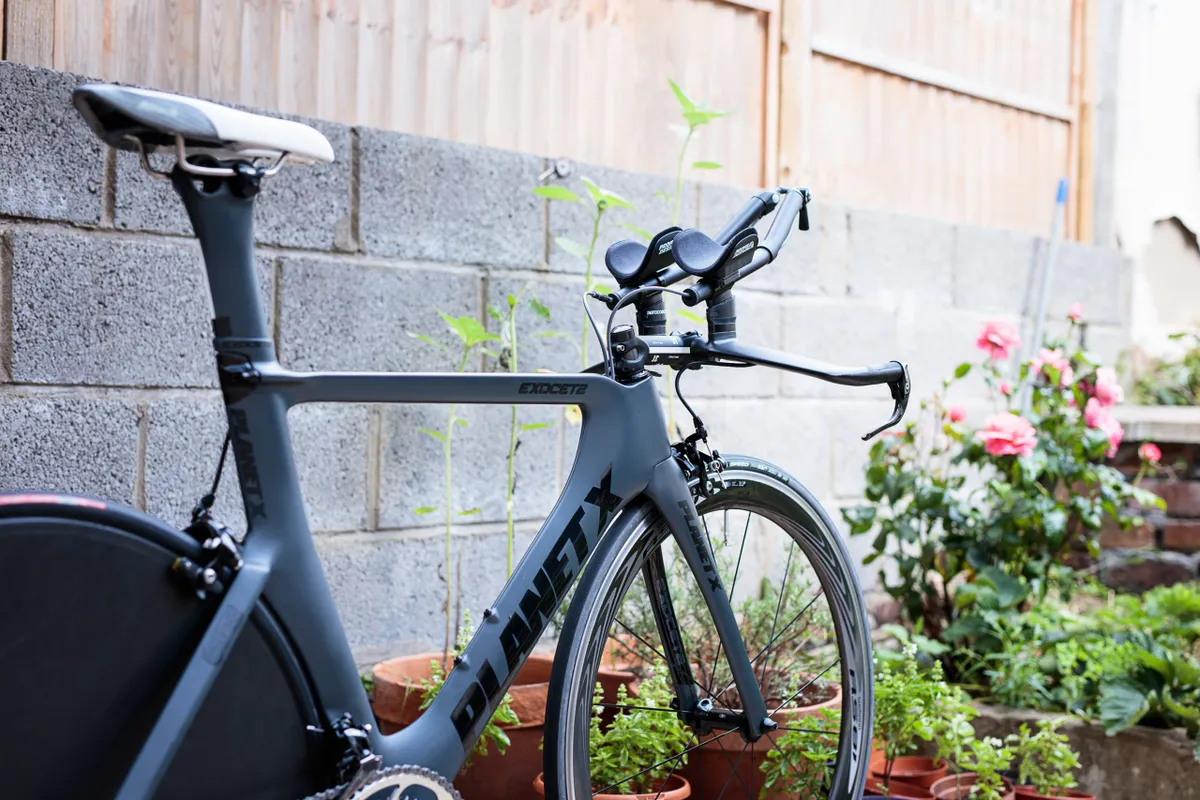
What does ‘yaw angle’ mean?
According to UK based Aerodynamics expert, Xavier Disley, yaw angle describes “the angle of attack of the wind on a cyclist”.
In simple terms, a straight-on headwind would have a yaw angle of 0 degrees, and crosswinds have positive or negative values depending on which side the wind is coming from (crosswinds hitting the driveside first are described as having positive yaw angles, and vice versa).
The yaw angle a rider experiences at any moment is affected not just by the rider and wind's direction of travel though, but the speed of both of those things as well.
Generally, riders moving more slowly will experience higher yaw angles than riders moving at higher speeds.
Disley says that “at speeds of 45kph or higher, a rider will spend around 80% of their time at 7.5 degrees of yaw or less. This extends out to 10 degrees below 40kph, but at over 50kph you’ll only see yaw angles of 5 degrees or lower.”
So, if you are riding really fast you’ll want to be optimised for low yaw situations, but at slower speeds optimising for a higher and wider range of yaw angles could be beneficial.
It’s for this reason that equipment and clothing manufacturers often take a range of yaw angles into account when designing their kit.
Finding out exactly what conditions a particular piece of kit is optimised for can be tricky if a company doesn't share its testing data publicly, though.
A painted logo on the seatstay indicates the frame is constructed from T800 carbon fibre.
This would have been quite high modulus carbon fibre for the time, but it’s of course not clear how much of that has been used to construct the frameset (high modulus carbon fibre, which is stiff but brittle, is almost always used in conjunction with lower modulus, higher strength carbon fibre).
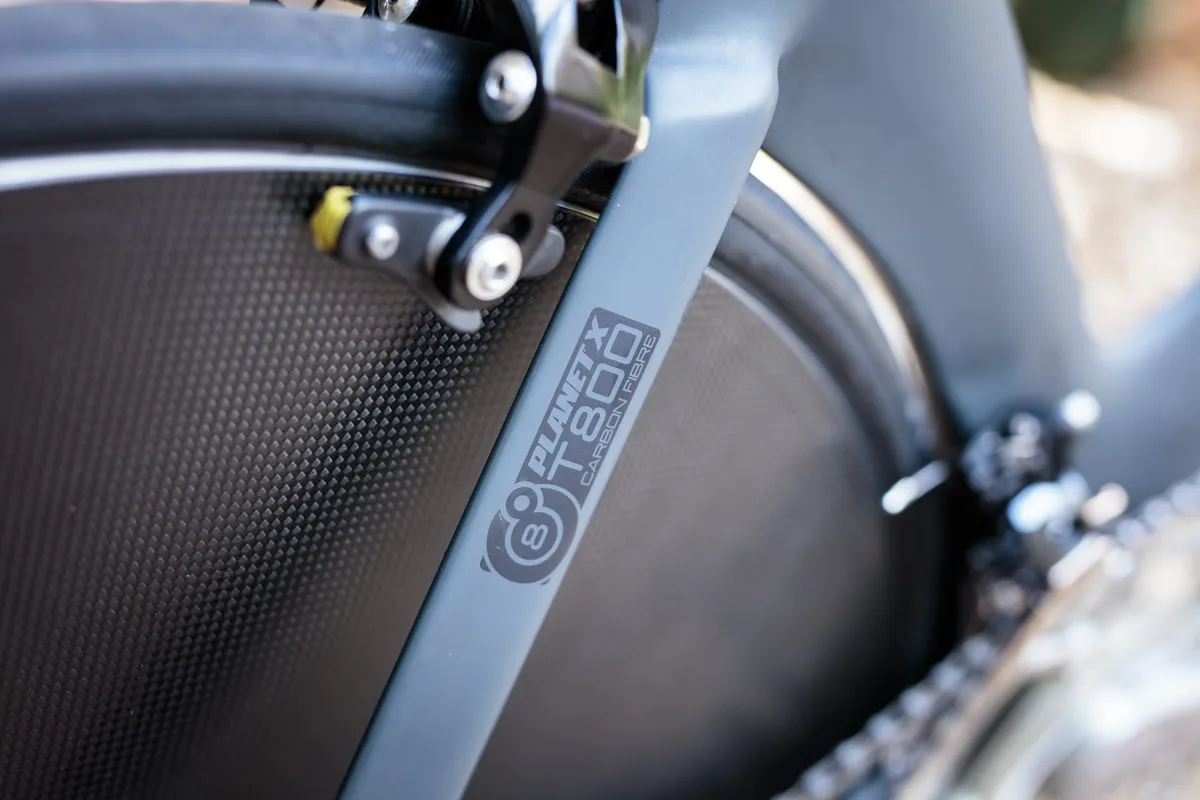
It’s also noticeable that the aerodynamics of the frameset appear to have been designed without a water bottle or brakes in mind.
The down tube, for example, is so thin that adding a water bottle would likely induce significant extra drag. This was, sadly, de rigueur at the time.
Fortunately, for short time trials, carrying water is generally unnecessary. If I really wanted to, I’d likely look to carry a small bottle between my arms instead – in the space between my forearms on the aerobars.
Likewise, the rear brake mounting area is very small and thin. Presumably, this is because that was fastest on the computer. In the real world though, where it’s nice to have brakes, it doesn’t hide the rear brake well.
Don’t get me wrong, I’m not advocating for an under the bottom bracket brake (I’m well aware how bad those tend to be), but the Canyon Aeroad and updated Cervelo P3 would later show how to hide a standard rear brake caliper a little better.
Another consequence of this slim design is the rear brake caliper has to mount onto an awkwardly small, removable insert, which is then screwed onto the frame with a small Allen key.
In practice it works okay, but I don’t think it’s an optimal design.
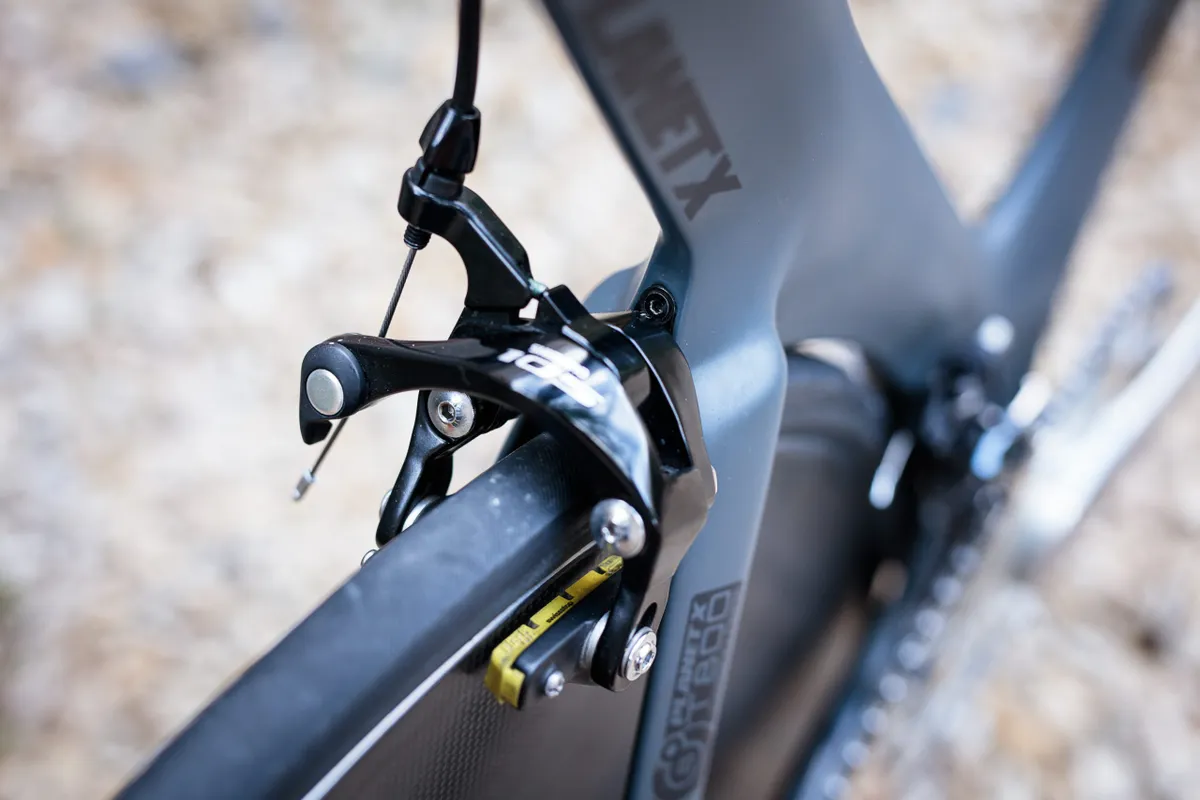
The frameset is also very much of its time in that tyre clearance is relatively limited. I can fit a 25mm tyre (measured width) at the front, but that’s about it. I’d be wary of trying to fit super-wide modern wheels at either end.
To be fair, though, that’s enough tyre clearance for time trials and I actually run 23mm tyres (which measure more like 24mm when inflated) for better aerodynamic performance anyway.
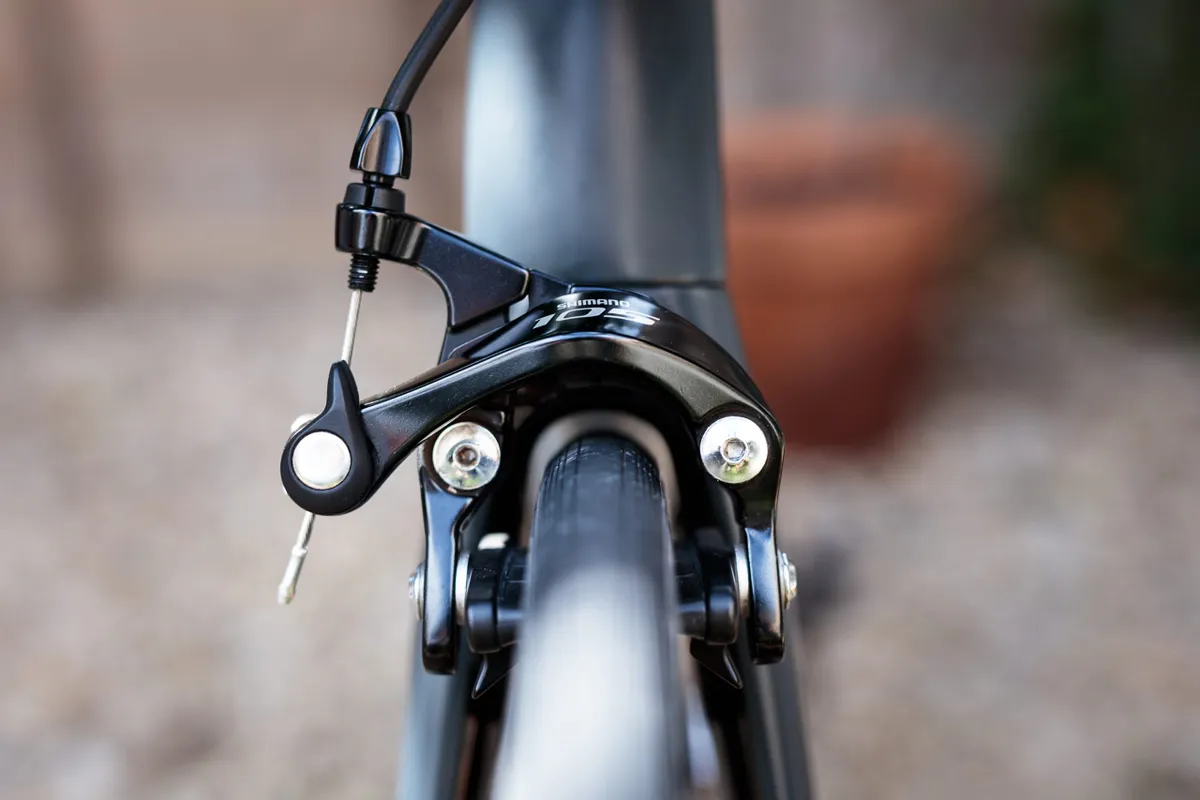
A final issue I had was that the original front derailleur hanger was of very poor quality and eventually bent out of shape quite badly.
Sadly, when I tried to replace it earlier this year, Planet X wasn't able to help me find a replacement (no doubt because it’s such an old frame).
A lot of googling, measuring and eyeballing determined a Giant Defy front derailleur hanger might fit though, so I took a risk and got one. Luckily, it fits and functions perfectly.

Wheels and tyres
If you’ve ever shopped for a full carbon disc wheel, you might be struggling to believe that the disc wheel on this bike could possibly have been cheap, but it was an eBay purchase and I paid £350 for it.
It’s an early disc wheel by Newcastle based wheel builders Walker Brothers. It’s a flat, rather than lenticular disc and, although it appears to be of full carbon construction, a carbon outer fairing hides an aluminium clincher rim.
It’s a structural disc wheel, rather than a spoked wheel with a semi-rigid carbon fairing like a HED Jet Disc, though it’s debatable whether this is an advantage or a disadvantage.
It’s also very heavy. I haven’t weighed it in its bare state, but set up for race day (i.e. with rim tape, a tyre, an inner tube, cassette, and skewer) it weighs a whopping 2.46kg.
Conventional wisdom is that rotating weight matters a lot, but I personally don't buy it. Yes, it takes a tiny bit more energy to accelerate up to a given speed, but that energy isn't lost – it remains in the system, helping to resist deceleration like a flywheel (unless you have to brake).
For a time trial, I’ll take the aero benefit of a disc wheel over a lighter, less-aero wheel practically any day.
The front wheel is a Shimano RS81 C50. As the name suggests, it has a 50mm deep rim (17mm / 22.5mm wide internally and externally) and consists of a carbon fairing bonded to a standard, spoked aluminium wheel. It has just 16 spokes, another small aero gain.
Though not very fashionable, this type of construction has two major benefits. Firstly, you get the good braking performance of an alloy rim and, secondly, it’s cheaper. I bought it new and I think I paid around £380 for it.
The front tyre is a first generation Vittoria Corsa Speed TLR. This consistently came out on top of independent rolling resistance tests and, since a new version was recently released, I was able to get it fairly cheaply.
It’s a tubeless tyre, but I’m running both wheels with latex tubes because the rims aren’t tubeless compatible.
I actually bought a pair of the Corsa Speeds, but I couldn’t get the second onto the rim of my disc wheel because it has an excruciatingly narrow, 13.5mm wide rim (internal width).
As you may have guessed, I spent a couple of painful hours trying to muscle it onto the rim with my burliest tyre levers, blissfully unaware that fitting road tubeless tyres actually requires a minimum internal rim width of 17mm and a dropped central channel (neither of which the wheel has).
Eventually I relented, googled it, felt stupid, and settled on fitting an old Vittoria Open Corsa Evo CX clincher I had in my spares box.
I’m planning on upgrading it to a Continental GP5000 clincher very soon though, because new tyre compounds have shown significant improvements in rolling resistance and I can’t resist the cheap speed.
Components
The drivetrain is a mix of Shimano parts, some new, some slightly older. The key to it is that everything is big. Big chainrings, big cassette.
Up front I’ve got 56/42 chainrings. Out back I’ve got an 11-34 cassette.

You might be wondering how anyone who isn’t nicknamed Der Panzerwagen could possibly need a 56-tooth chainring though. After all, isn’t 53×11 already a very big gear?
The answer is that I’m not looking for a bigger gear per se – you’d be correct in guessing I can’t spin a 56×11 gear on anything but very fast descents. I’m actually looking for bigger cogs and a better chainline.
Both of these things help make your drivetrain a little more efficient, meaning less of the power you put through the pedals is lost to friction in the drivetrain.
I did originally buy a 58t, but I sadly couldn’t get the front derailleur to clear it, even with a large spacer (If anyone wants to buy an unused 58t TA Alize chainring, get in touch).
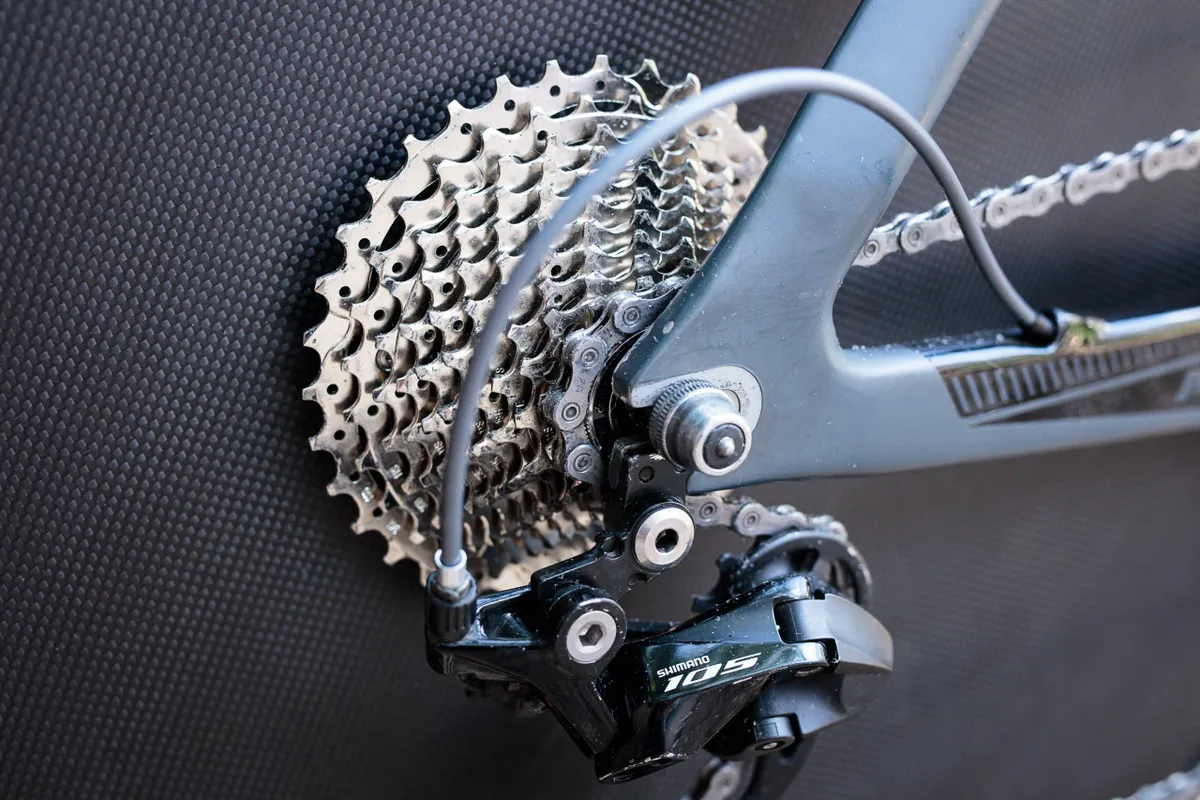
1× drivetrains are very popular right now in the time trial scene, so I’m quite tempted by a 58t or even a 60t 1× aero chainring for flat/rolling courses.
Having the 11-34 cassette means, for most courses, you only ever need the big ring anyway, so removing the front derailleur could be another small aero gain.
For a flatter course it would be nice to have a more tightly spaced cassette, but sadly the disc wheel has an old 10-speed Shimano freehub that can't be upgraded to an 11-speed version. Fortunately, the CS-HG700 11-speed cassette fits on to the 10-speed freehub because the 34-tooth sprocket is so big it won't interfere with the spokes of a normal wheel.
There are 11-speed cassettes specifically made for 10-speed freehubs (like Edco's Monoblock cassette), which are a decent option. They're pretty pricey and not always easy to get hold of though, so I haven't jumped on that bandwagon yet.
I’ve also got a waxed chain. You can buy these off the shelf, from brands such as CeramicSpeed, but it’s also fairly easy to do it yourself at home once you’ve invested in a few bits of cheap kit. Highly recommended for those who like to save money and watts.
The saddle is an ISM Adamo Attack. If you’re riding a time trial or triathlon bike on a normal saddle, I would implore you to try a time trial/triathlon specific one like this. It does look a bit goofy when you’re not sitting on it, but the difference in comfort when riding in such an aggressive position is enormous.
Up front, the handlebars are a set of generic carbon integrated time-trial handlebars from a well-known Chinese online marketplace. They’re similar to the kind now sold by Planet X under the Selcof brand name, but at the time these were only available direct from the Far East.
It’s debatable as to whether it's a good idea to buy unbranded carbon parts from unknown sellers in far away countries. It’s hard to say exactly what the level of risk is, but if you do have any issues you’re likely to be left out in the cold.
I’m reasonably lightweight, and considered that I don’t put much stress on components so would in all likelihood be fine (and so far, touch wood, I haven’t had any issues).
If I had a bit more money to spend though, I’d certainly have preferred the peace of mind buying something from a reputable brand brings. With hindsight, something such as Zipp’s Vuka Alumina system would likely have been just as good and much less risky.
Like the aforementioned 1× drivetrains, ‘high hands’ positions (where the aero bar ends are 10cm or so above the level of the armrests) are also very fashionable in time trialling at the moment. I’ve not tested it for aerodynamic efficiency, but I personally find having angled armrests much more comfortable than flat ones.
Unfortunately, the handlebars I have don’t have built-in tilt functionality, so I bought some tilt adaptors from Aerocoach. They are relatively expensive, but they work very nicely and Aerocoach is, after all, a relatively small business that doesn't have the economies of scale a larger brand does.
The heaviest... and fastest bike I own
It’s worth reiterating at this point that even at over 9.5kg this is by far the fastest bike I own.
A substantial portion of that is likely due to the position it puts my body in, but that only further reinforces how important aerodynamics are.
Yes, for a time trial up Mont Ventoux I would choose a lightweight climbing bike, but that type of course simply doesn't exist in the UK.
The couple of kilograms saved by switching bikes would only amount to something like 2 to 3 per cent of my total rider plus bike weight, however, and that’s for someone who (at around 64/65kg) is already pretty lightweight. If you weigh more than that, the percentage difference is going to be smaller.
Furthermore, this weight saving is only likely to account for a handful of seconds over a ‘heavy’ aero bike even on a mountain top finish.
Better aerodynamics also have the potential to significantly increase your speed on the downhill and flats following hills, so if the race doesn’t finish on a summit you’ll be able to easily make up any time lost from carrying a little extra weight on the way up.
If the hypothetical Mont Ventoux time trial was adjusted to include a descent, for example, an aero road bike with hydraulic disc brakes would almost certainly be fastest overall.
So, when you’re racing time trials it’s especially important to consider how much time will actually be spent on steep gradients, and whether or not it makes sense to optimise for those small sections of the course.
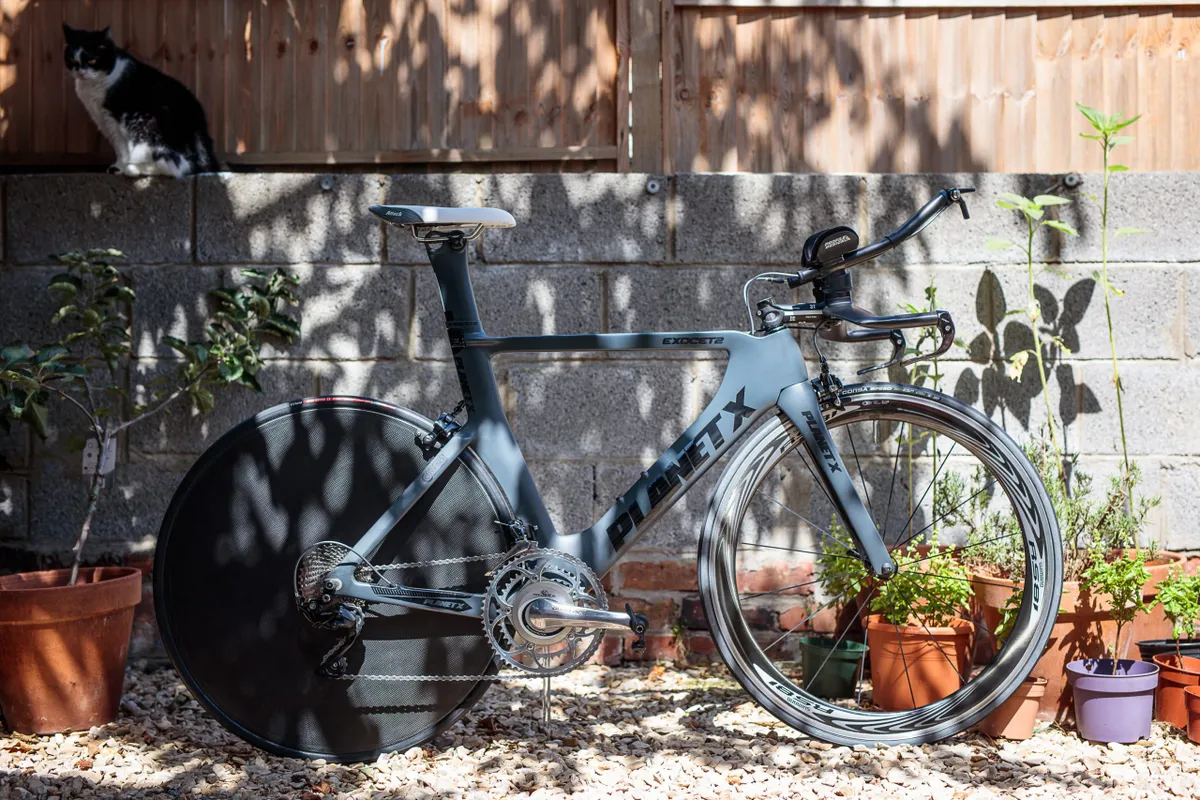
It’s not that weight doesn’t matter at all. Something having less mass does mean less energy is required to move that thing. It’s just that the weight differences between performance bikes are, in the grand scheme of things, so small.
A handful of seconds saved on a mountaintop finish by reducing weight might make a huge difference to a WorldTour pro or a national hill climb champion, but the cycling industry puts an inordinate premium on lightweight bikes and parts, so if you want your bike to be light, it’s going to cost you.
Given this, my advice to people who don’t want to spend loads of money (but still want to be fast) is, if you’re looking to make weight savings, look in the mirror first. It’s much cheaper to lose 2kg off your body weight than it is off your bike – just make sure you do it safely and consult your GP if you need advice.
Consequently, other characteristics (and especially aerodynamics) take on much greater significance if you want to ride fast because of the non-linear relationship between increasing aerodynamic drag and the power required to overcome it.
The long and short of it is if you want to double your speed, aerodynamic drag is quadrupled and you will need to supply eight times the power to overcome that.
You don’t even have to take my word for any of this. You can do the calculations yourself on any good power vs speed calculator or with tools such as Best Bike Split.
Playing around with the numbers makes it very obvious that the small weight reductions possible with bikes pale into insignificance compared to aerodynamics and rolling resistance on anything but the steepest gradients.
Future upgrades
Given I’ve built this bike relatively cheaply, there are quite a few things I could further optimise on it, if money were no object (although if money were really no object I’d just buy a whole new bike).
The obvious ones are around the leading edge. Time trial handlebars have taken a massive leap forward in recent years and a set of integrated handlebars such as those by Wattshop or Aerocoach, perhaps with electronic shifting, could really clean up the front end.
Likewise, an aero stem (Profile Design has a couple of good options – the Aeria and the Aeria Ultimate) and a set of more aerodynamically efficient brakes, such as the TriRig Omega X, would also be a smart upgrade.
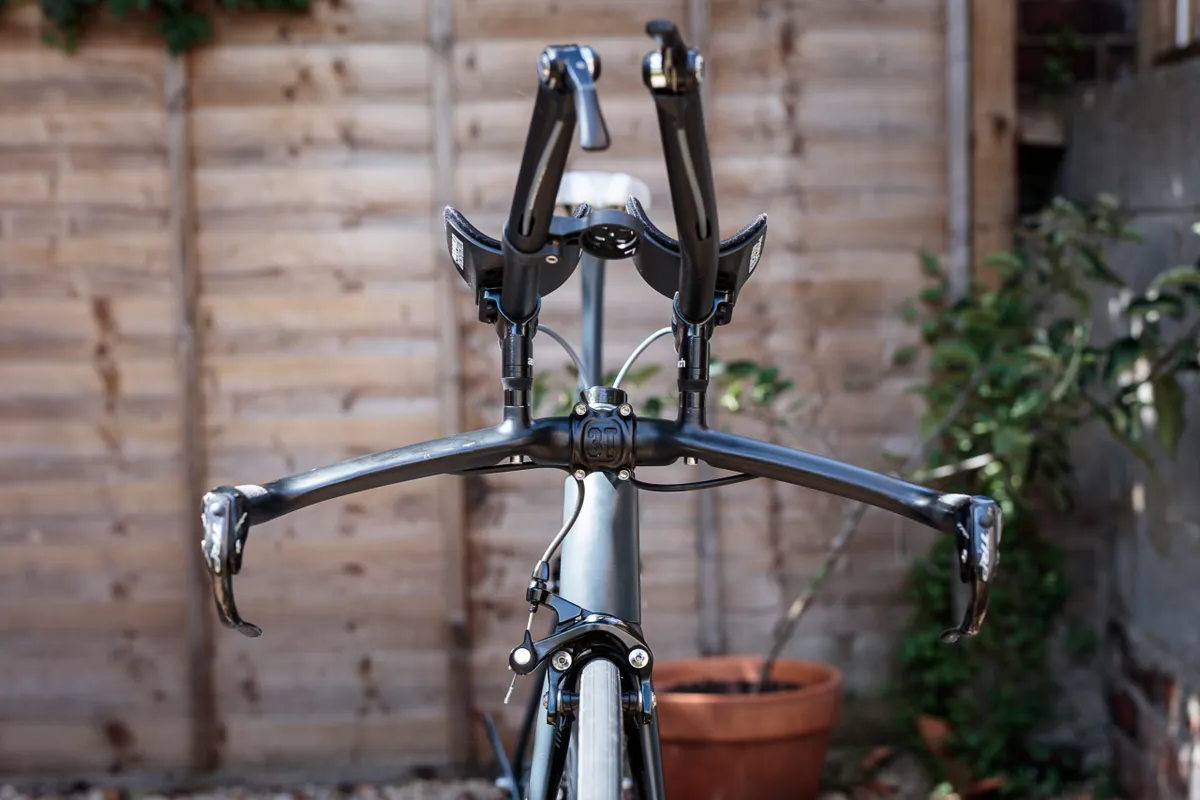
On the subject of electronic shifting, SRAM eTap is undoubtedly where it’s at for TT bikes right now. The wireless system makes for wonderfully clean builds, especially in a 1x system. SRAM also has lots of shifter button options, meaning you can really go to town on customising it for your own needs.
Alas, even the second tier Force eTap AXS groupset is still pretty expensive. The groupset alone probably costs more than what I’ve spent on this entire bike so, as long as I’m spending my own money, Shimano 105 will do just fine.
Better wheels could be a reasonably significant upgrade too. Since the bike has rim brakes, a set of HED Jet wheels, such as a Jet 6 front and a Jet Disc rear, would be perfect (because they have aluminium brake tracks).
I’d even be tempted to abandon my beloved latex inner tubes and run them tubeless with Corsa Speed TLR tyres front and rear.
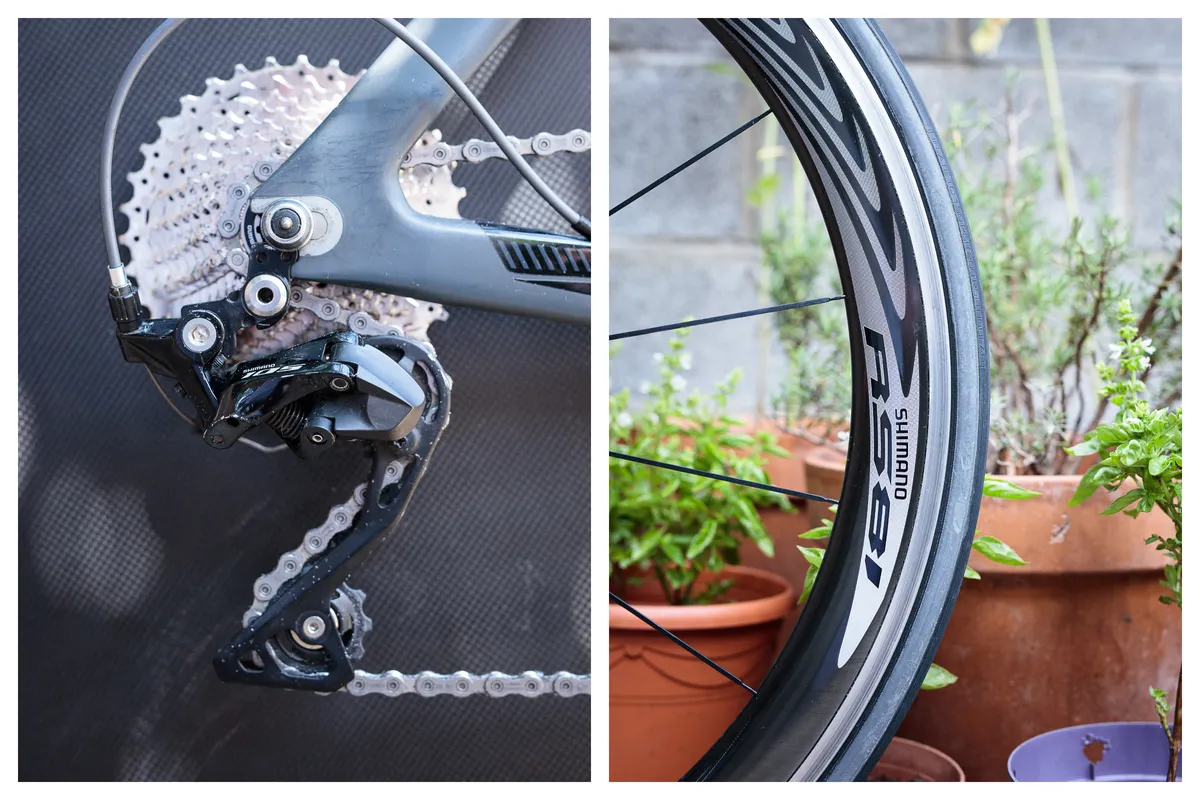
Again, though, that would involve significant cash investment. I’ll probably leave the drivetrain and wheels as they are and save up for a better skinsuit or some professional aero testing.
Simon’s Planet X Exocet 2 full spec
- Frameset: Planet X Exocet 2, size L
- Rear derailleur: Shimano 105 RD-R7000-GS
- Front derailleur: Shimano Dura-Ace FD-9100-F
- Crankset: SRM Shimano Dura-Ace 7800
- Chainrings: TA Alize 56/42
- Cassette: Shimano CS-HG700-11 11-34
- Chain: Shimano HG-X11
- Shifters: Shimano Dura-Ace SL-BSR1 bar end shifters
- Pedals: Favero Assioma Duo power meter pedals
- Brakes: Shimano 105 5800
- Handlebar: Generic carbon integrated time-trial handlebar
- Stem: 3T ARX Pro 110mm
- Saddle: ISM Adamo Attack
- Front wheel: Shimano RS81 C50 clincher
- Rear wheel: Walker Brothers disc wheel (10-speed freehub)
- Tyres (front/rear): Vittoria Corsa Speed G+ TLR, 23mm / Vittoria Corsa Evo CX clincher 25mm
- Inner tubes (front/rear): Latex (Vittoria/Michelin)
